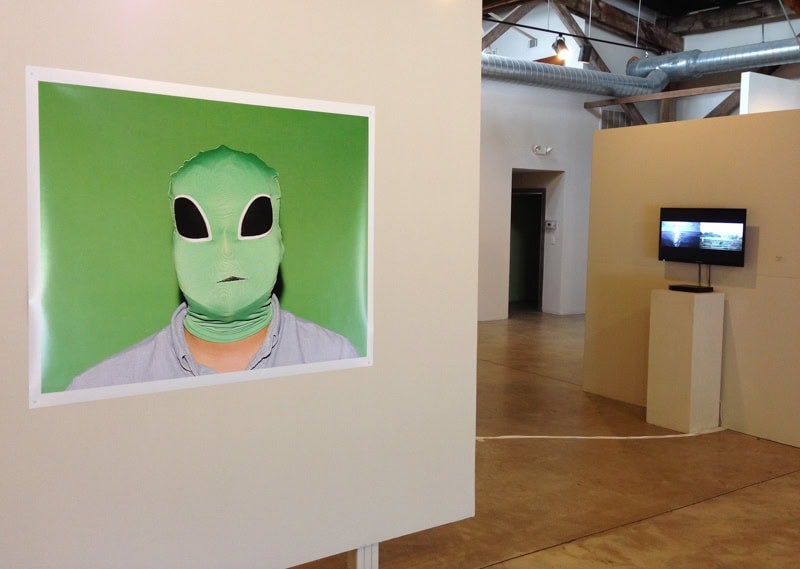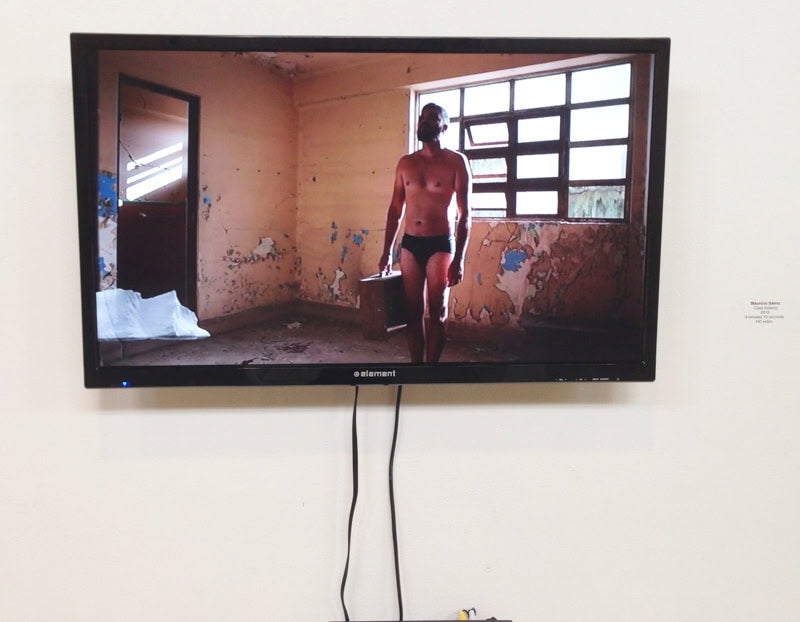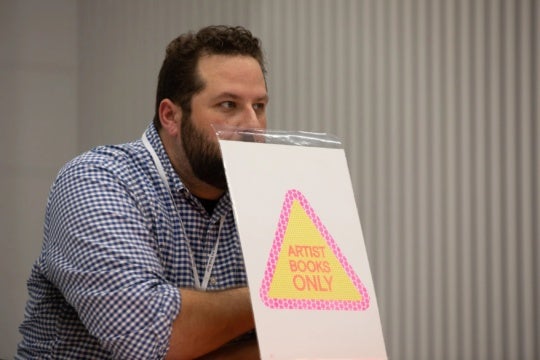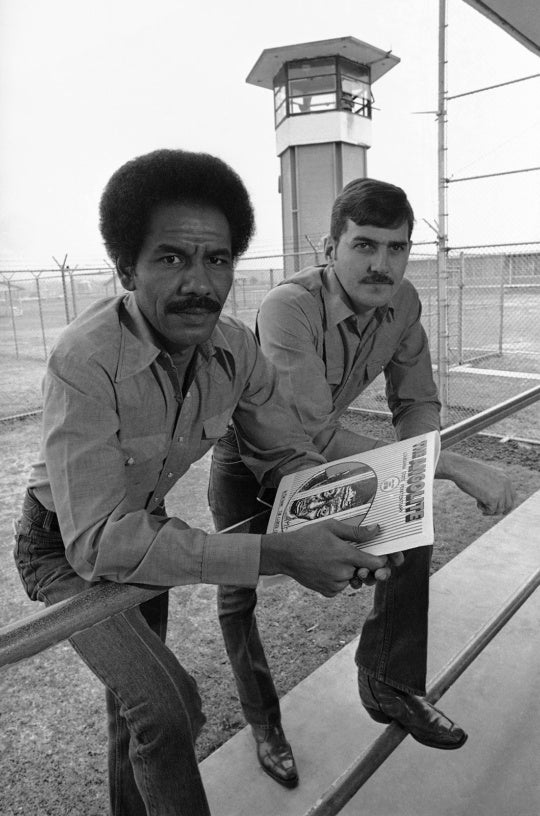
“Recognize yourself in he and she who are not like you and me.”
– Carlos Fuentes
Why is the subject of immigration such a polarizing topic for most Americans? Despite the fact that most of us are descendants of people from other lands and cultures, with the exception of Native Americans, the original inhabitants of this country, immigration remains an emotionally loaded issue. But what is often missing in the heated debates and media coverage are alternative viewpoints and shared experiences from naturalized U.S. citizens and immigrants who are living here now. This, in essence, is what makes “This Land: Immigration in the United States,” the current exhibition at ATHICA (Athens Institute for Contemporary Art) such a timely and much needed response to the current state of the nation.
Curated by Stanley Bermudez, a Venezuelan American artist and University of North Georgia art professor, the gallery show features a nice balance of diverse styles and mediums, including archival pigment prints, mixed media, digital photography and HD video shorts, most of them created by artists who are either non-natives or former immigrants who became U.S. citizens.
A persistent feeling of alienation is a recurrent theme in some of the work and is also a reflection of the curator’s own experience, which he describes in his introduction to “This Land”: “As an immigrant I feel a duality within myself … I sometimes feel like an outsider in this country because of my accent, my language, the music I like to listen to, etc. When I go visit my homeland I also sometimes feel like an outsider because I have been gone so long and have not lived in Venezuela for the past thirty-two years.”

Some of the work has a direct and unambiguous impact, such as Valerie Aranda’s Soul of the Motherland, which depicts a determined Latino woman wading through shallow water as the words of Chicana poet Gloria Anzaldua scroll down vertically over her formidable image. Erosion of a Dream, a painting by Carlos Solis, combines idealized icons and historic truths about America in a conflicted vision where a faceless Statue of Liberty presides over images of slavery and forced labor in a dark cloud above the ship’s mast. At the bottom of the painting we see an expectant immigrant on the shore flanked by the unwelcoming disembodied face of Lady Liberty.
Another interpretation of the American Dream is offered by Anthony Baker’s The Keep Off the Grass While You Wait Sweepstakes, in which a high security compound surrounds Uncle Sam who is smoking a pipe on a lounge chair, oblivious to the surrounding figures who are hoping to enter the fenced-in grounds.
More abstract and in need of decoding are the mixed-media compositions of Mahera Khaleque which resemble highly stylized topographical maps in which the colors, patterns and specific markings seem to have a secret meaning that eludes easy detection. No Fisherman Shall Ever Find a Pearl in a Small Brook, in particular, juxtaposes graffiti and snatches of other languages and words over a chaotic landscape of erupting colors. Fragmentation and disorder reign supreme.

Loss of identity and the deeper implications of photographic and digital representations are prevalent themes in two visually striking works by Deepanjan Mukhopadhyay, which are showcased in the center of the front gallery. Non Resident Alien offers a sardonic but familiar variant of the word alien with a masked figure that combines both sci-fi/UFO connotations with the tradition of Lucha Libre, a style of Mexican wrestling. More minimalistic but equally telling is All Dreams are White, which presents a symbolic representation of white America in the form of a hermetically sealed device with various controls to aid sleepers.
The main highlight for me are the short, eloquent high-definition video works by Mauricio Sáenz that find rich visual metaphors for the many obstacles facing immigrants, such as exclusion, isolation, and displacement. The 3½ -minute Drift, for example, features a small motorboat navigating the waters but never really going anywhere. It remains stuck in place, cut off from everything in an endless futile loop.
As an added bonus, ATHICA invites visitors to “This Land” to participate in an interactive installation, Faces of Immigration. Utilizing two walls, the work connects locations on a map of North America with strings leading back to points of disembarkation around the world. Gallery visitors are invited to contribute, with assistance from the staff, snapshots, small mementos and biographical tags that relate to their own personal genealogies and immigration histories. Gazing at just one small detail of the installation, I saw tagged connections between America and Arachova, Greece; Chieti, Italy; Sydney, Australia; and Kolkata, India.




